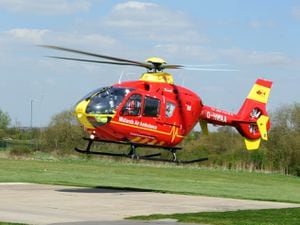Shropshire health bosses in assurances over A&E ambulance handover delays
Health bosses have offered assurances that they are working to reduce delays facing ambulances handing over patients at Shropshire's two main hospitals.

NHS rules state it should take no longer than 15 minutes.
The Shrewsbury and Telford Hospital NHS Trust (Sath), which runs the hospitals, says that to help cope with demand the trust has taken measures to improve work between the hospital ambulance liaison officers and its handover nurses and A&E staff.
Nigel Lee, chief operating officer at the trust, said: “Whilst we recognise that ambulance waits are, at times, still too high, we continue to work hard with our colleagues from the West Midlands Ambulance Service (WMAS), Welsh Ambulance Service and other parts of the health and social care community to improve this."
He said that in 2017/18, the trust saw an average of around 690 ambulances arriving at its A&E departments every week – almost 100-a-day.
Mr Lee added: "Between the start of January and the end of March, that figure rose to nearly 730 ambulances every week.
"In September, that had risen again to around 735.
“On Wednesday of this week, for example, we saw 34 more ambulances arrive at our A&Es than on the same day last week.
“In the last year, we have seen our highest ever level of A&E demand, with almost 124,000 attendances, as well as our highest ever level of emergency admissions, with a 13 per cent increase from almost 55,200 in 2016/17 to more than 62,500 in 2017/18.
See also:
"We will always focus on clinical priority in our A&Es, treating the most urgent patients first.
“We know from our colleagues working in these areas that our emergency services, split across two sites, are not designed for the 21st century and that a long-term, strategic solution is required. However, our staff continue to work hard to provide the best care possible in very difficult circumstances."
Mr Lee thanked staff and ambulance crews for their continued dedication and hard work.
Shropshire Clinical Commissioning Group also said it was working closely with a hospital ambulance liaison officer to try to minimise delays.
WMAS said it operates a number of measures to help ensure ambulances are able to offload patients as quickly as possible.
In 3,726 cases between April and September, ambulances waited at least half-an-hour at PRH or RSH to hand over patients.
In 860 cases, crews waited at least an hour.
Sath says it also has a shortage of A&E consultants, middle grade doctors and nursing staff.
Figures for September show just over 70 per cent of patients were seen at the trust's emergency departments within the four-hour target.
The operational standard is that at least 95 per cent of patients attending A&E should be admitted, transferred or discharged within four hours.
Staff shortages have also led to the planned night-time closure of A&E at PRH.





